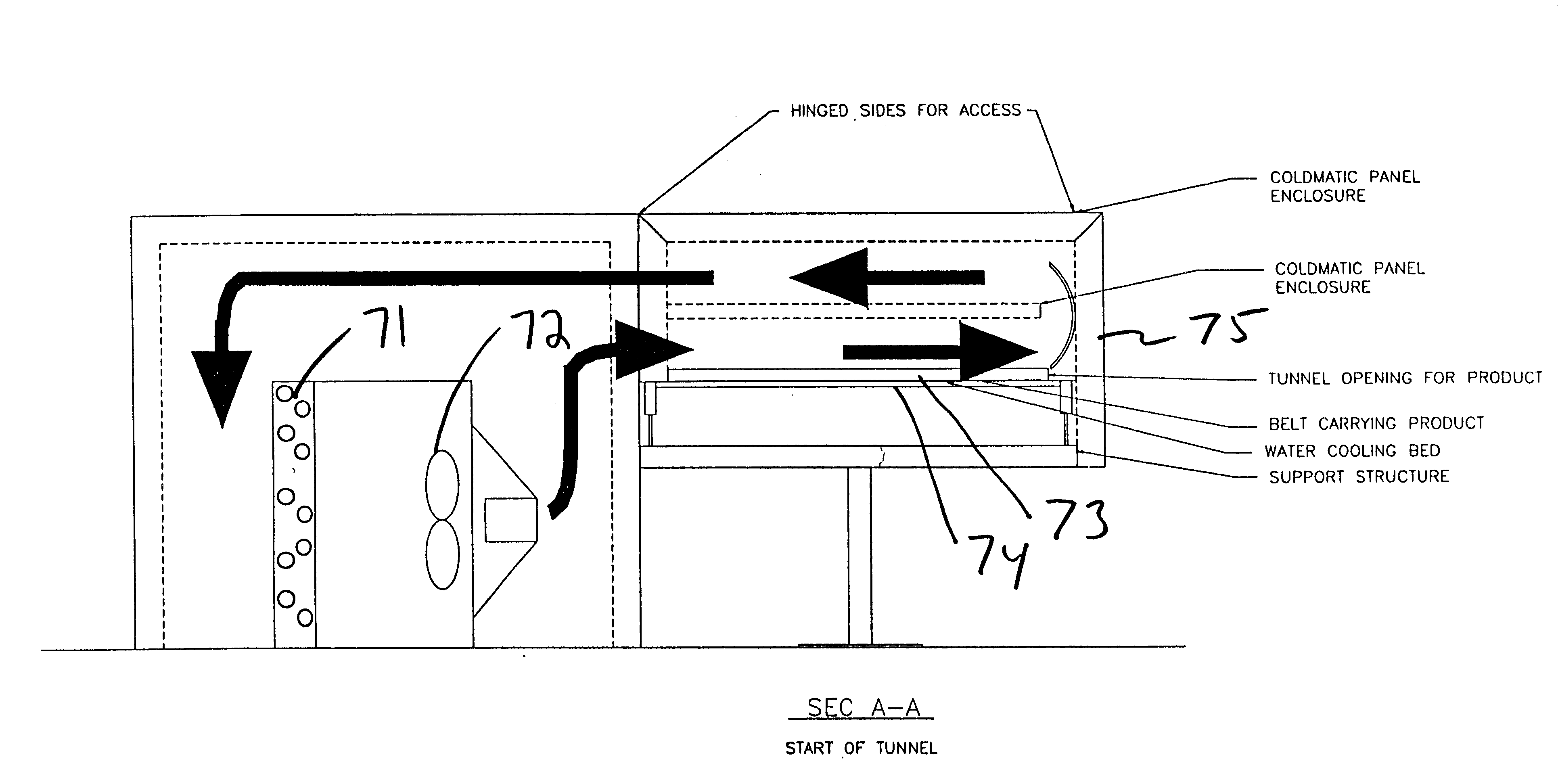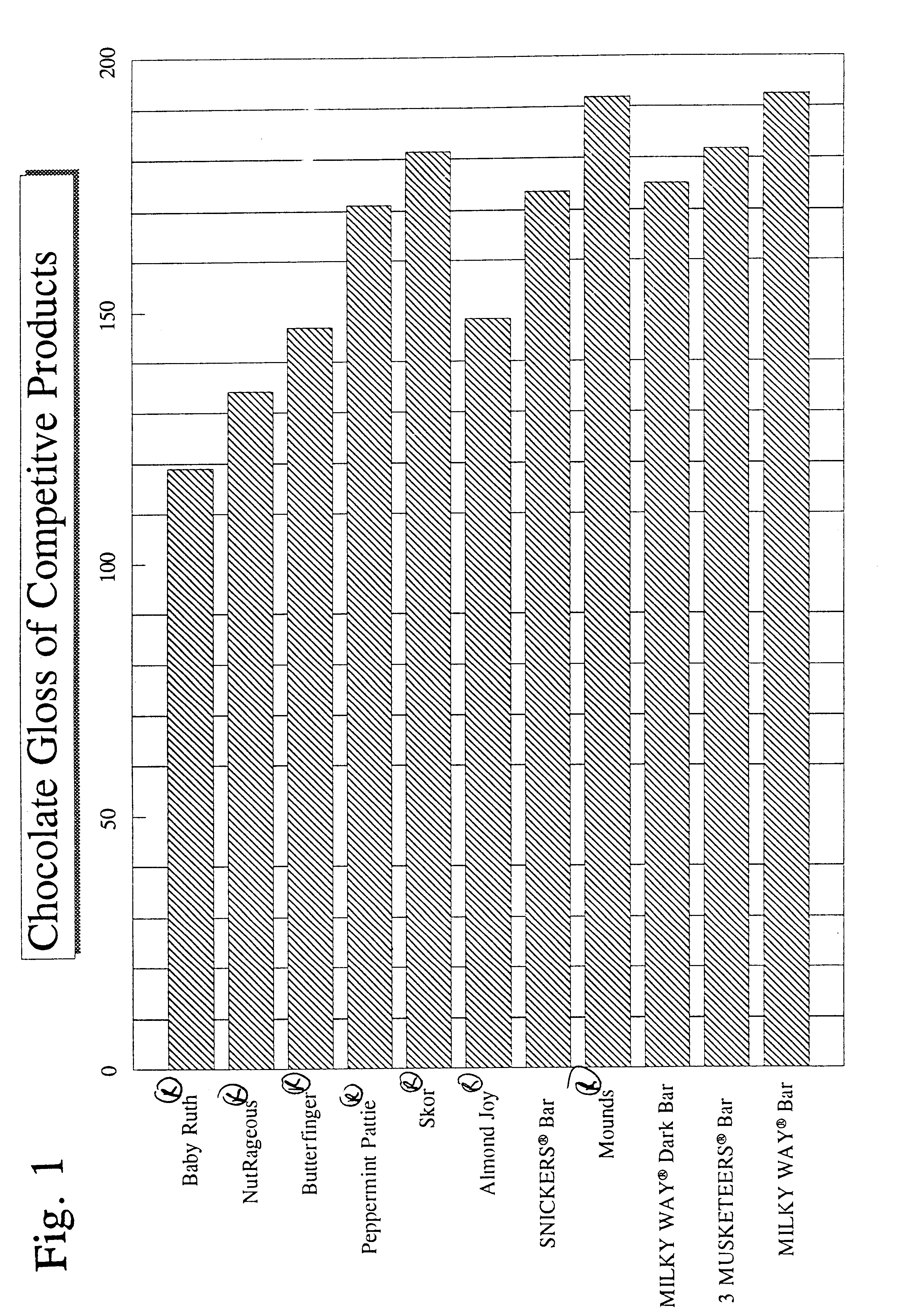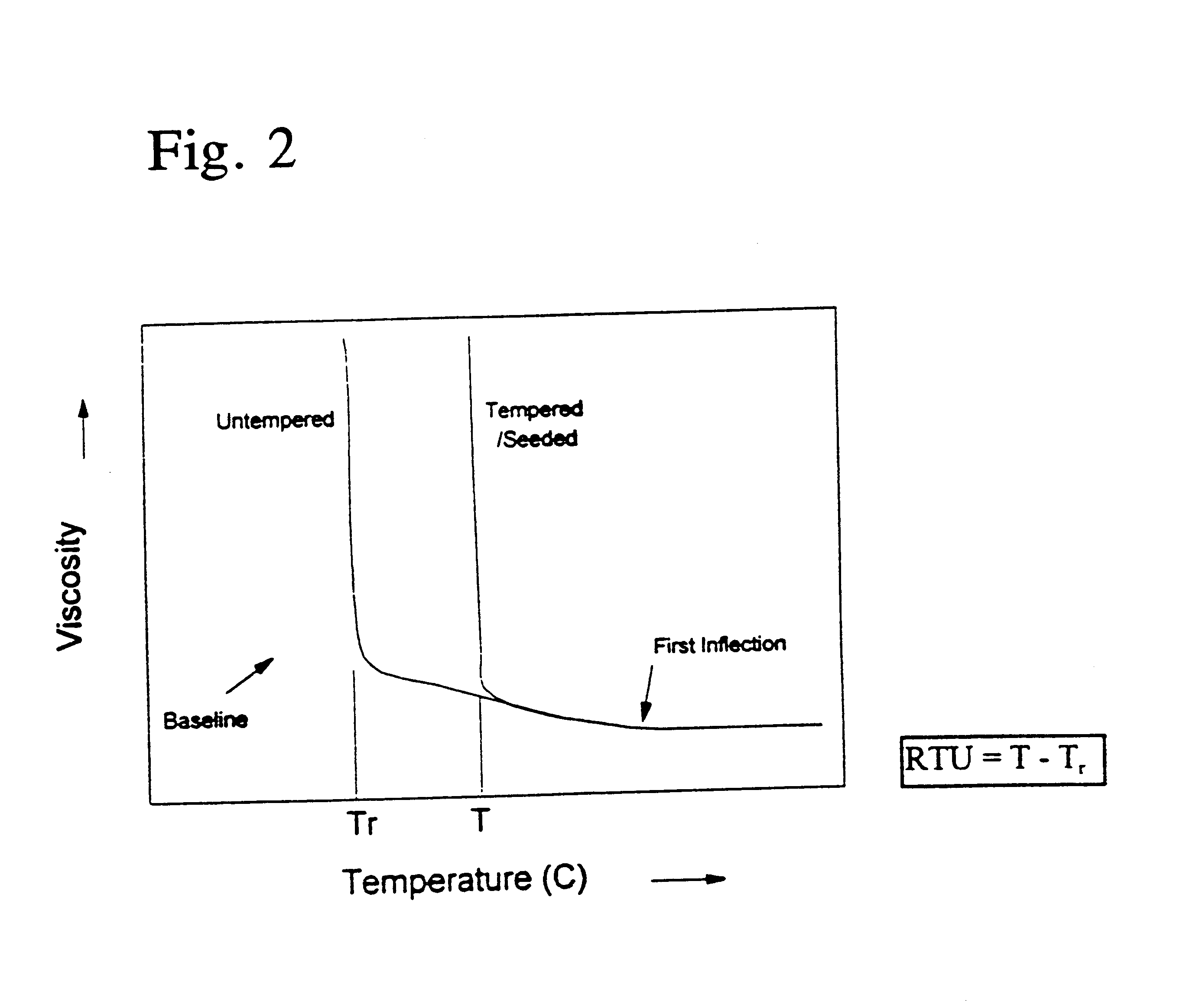Methods of setting chocolate and products produced by same
a technology of chocolate and products, applied in the field of methods of setting chocolate and products, can solve the problems of prolonged time, greasy products, bad chocolate color and fat bloom, etc., and achieve the effects of rapid cooling, aggressive cooling, and rapid cooling of chocola
- Summary
- Abstract
- Description
- Claims
- Application Information
AI Technical Summary
Benefits of technology
Problems solved by technology
Method used
Image
Examples
example 1
A milk chocolate composition is prepared using the formulation in Table 1-A below:
The chocolate mixture is refined to reduce the solid particle sizes to 25 microns (by micrometer) and then loaded into a Petzholdt Conge. The chocolate is dry conged for 6 hours after which lecithin is added. The chocolate is then spun in the conge for 30 minutes. The conged chocolate is transferred into a tank where additional lecithin and cocoa butter are added. (standardization) to achieve an apparent viscosity of 20,000 cps at 45.degree. C. The standardized chocolate is then tempered in a continuous Sollich Solltemper-Turbo Model MSV3000 where the chocolate is cooled from 45.degree. C. to 28.degree. C. with aggressive shear to produce cocoa butter crystals of stable and unstable polymorphs. The tempered chocolate is warmed slightly in the last section of the Solltemper to 31.degree. C. to melt out unstable crystals. The tempered chocolate is at 31.degree. C. and has a temper level of 6 CTU (.degree...
example 2
A milk chocolate having a formulation similar to that used in Example 1 was prepared in the manner described in Example 1. The chocolate was tempered in a Sollich Solltemper-Turbo MSV3000 to a temper level of 7 CTU (.degree.F.) and a slope of -1.0 measured on a Tricor Tempermeter. The centers were formed as in Example 1, except with two layers. The bottom layer of nougat was 10 mm thick overlaid with a 4 mm thick layer of caramel (creating a 14 mm thick center) comprised of the formula in Table 3-A prepared in the manner similar to that described in Minifie, 3rd Ed., pp 533-537.
The dimensions of the centers were 20 mm square and 14 mm high. The centers had an average temperature of 22.degree. C. at time of enrobing. The centers were enrobed with tempered chocolate in a Sollich Enromat Type EMN 1050 in the manner as described in Example 1. The coated centers were then cooled in a Sollich chocolate cooling tunnel Type KK. The cooling tunnel consisted of three sections: the first secti...
example 3
The chocolate is prepared and tempered as described in Example 2. Caramel / nougat centers are prepared in the manner described in Example 2. The centers comprise a nougat layer 10 mm thick and a caramel layer 4 mm thick applied onto the top surface of the nougat. The overall size of the center is 14 mm high and 20 mm square. The centers are then enrobed to the level as described in Example 1. The coated centers pass through a transition zone where the conditions are 31.degree. C. and -20.degree. C. dewpoint. The air pressure in the transition zone is slightly higher than both the enrober and tunnel. This reduces the transfer of cool air from the tunnel to the enrober and the transfer of moist air from the enrober to the tunnel. The residence time in the transition zone is approximately 10 seconds. The coated centers then enter the cooling section of the tunnel. The environment in the tunnel is -15.degree. C. with a dewpoint of -20.degree. C. The average H-value above the belt in the ...
PUM
 Login to View More
Login to View More Abstract
Description
Claims
Application Information
 Login to View More
Login to View More - R&D
- Intellectual Property
- Life Sciences
- Materials
- Tech Scout
- Unparalleled Data Quality
- Higher Quality Content
- 60% Fewer Hallucinations
Browse by: Latest US Patents, China's latest patents, Technical Efficacy Thesaurus, Application Domain, Technology Topic, Popular Technical Reports.
© 2025 PatSnap. All rights reserved.Legal|Privacy policy|Modern Slavery Act Transparency Statement|Sitemap|About US| Contact US: help@patsnap.com



